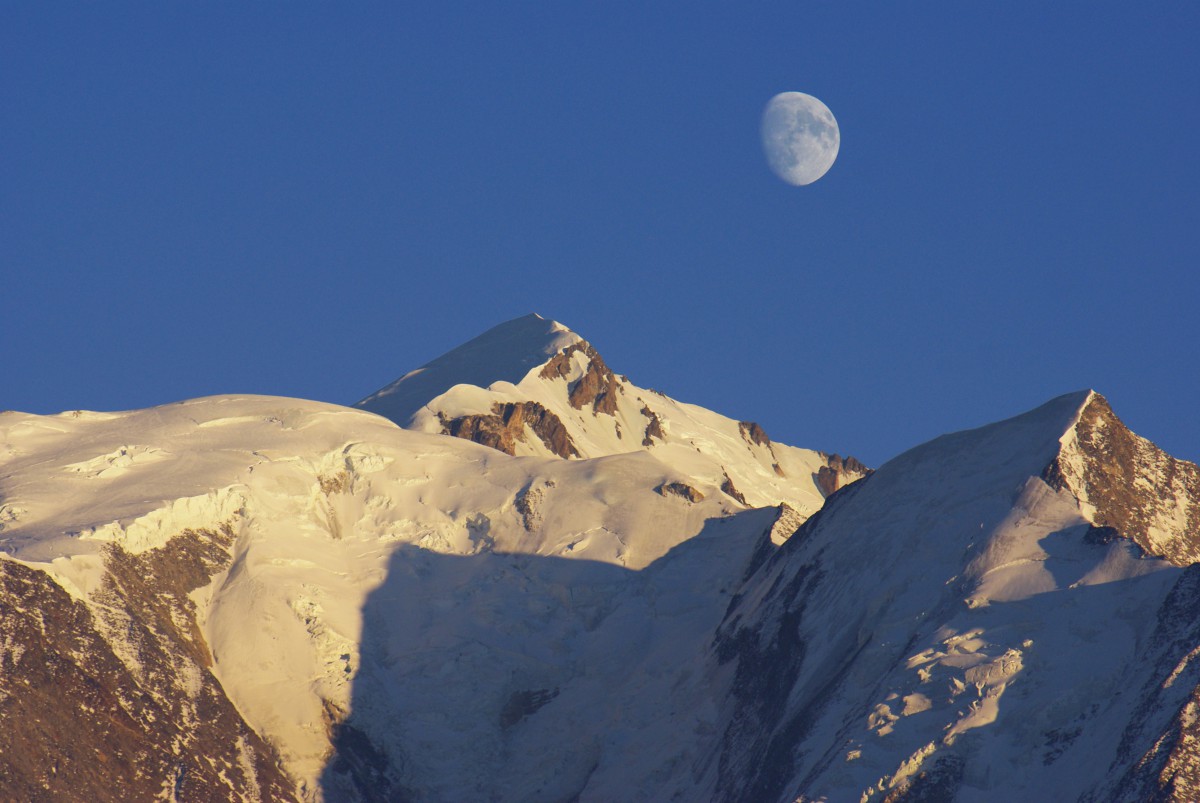Mont Blanc is east of the French département of Haute-Savoie (74), where France, Switzerland and Italy meet. This awe-inspiring mountain, meaning literally “White Mountain” in French, is the highest in the Alps, of France and the European Union. Its summit rises 4,810.45 m (15,782 ft) above sea level, between the French and Italian towns of Chamonix and Courmayeur.
Mont Blanc: an iconic mountain
The majestic Mont Blanc towers are so much higher than the surrounding mountains that they stand out and can be seen from viewpoints across Savoie, the Jura, the Massif Central, or even the Vosges mountains.

Check out this post, where I regularly add photos of Mont-Blanc seen from afar.
A bit of history

Before the 18th century, Mont-Blanc was locally nicknamed “the doomed mountain”.
There is still a summit of the massif called as such: the Mont Maudit.
Legend has it that an enchanted kingdom once existed at the summit, governed by a fairy (the “Déesse Blanche”). From the top of her verdant kingdom, she worked on the destiny of the inhabitants living in the valley of Chamonix.
However, until the mid-1700s, nobody, even local people, dared approach the summit or the glaciers. They were considered to be a land inhabited by demons, where witches and sorcerers used to dance to the sound of instruments.
However, the perception of high mountains as doomed places was to be forever shaken in the 18th century. Adventurous British visitors to Savoie took many mountain pioneering trips in the Alps.
The first mountain pioneers
In 1741, English travellers William Windham (1717-1761) and Richard Pococke organised a discovery expedition in the valley of Chamonix. There, they tackled the biggest glacier above Chamonix at Montenvert. They named it “Mer de Glace” (Sea of Ice). They marvelled at the size of the glacier. Its ogives and curved colour bands formed at the base of the icefall.
The expedition teams went home, re-telling the popular beliefs of the locals about their fear of glaciers, supposedly haunted by evil beings.
These frightening stories are believed to have been partly due to the recent growth of glaciers. In older times, an ice-free passage linked the valley of Chamonix to the Valley of Aosta.
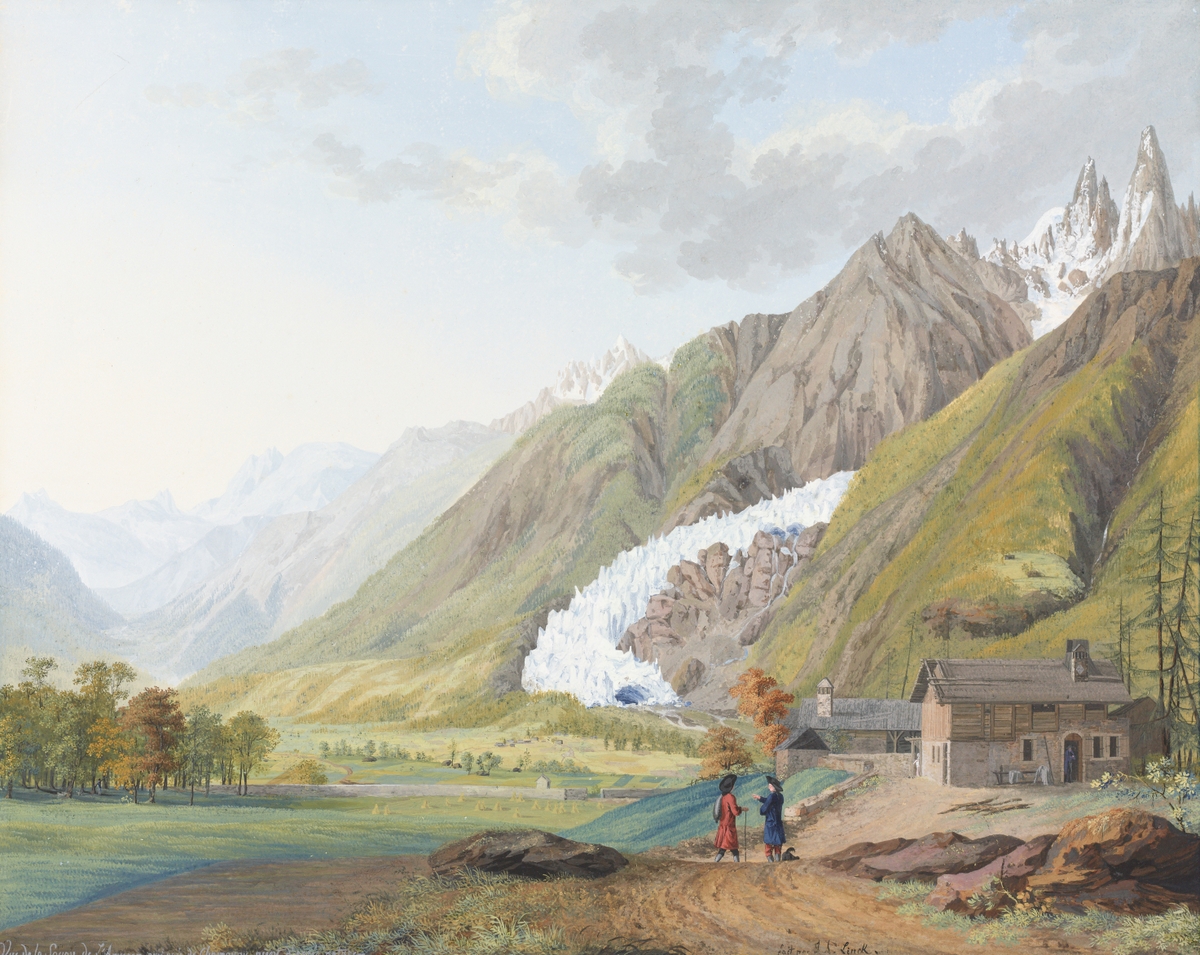
At the beginning of the 18th century, religious processions were organised to counter the effects of the Little Ice Age. Indeed, the Mer de Glace was dangerously approaching Chamonix.
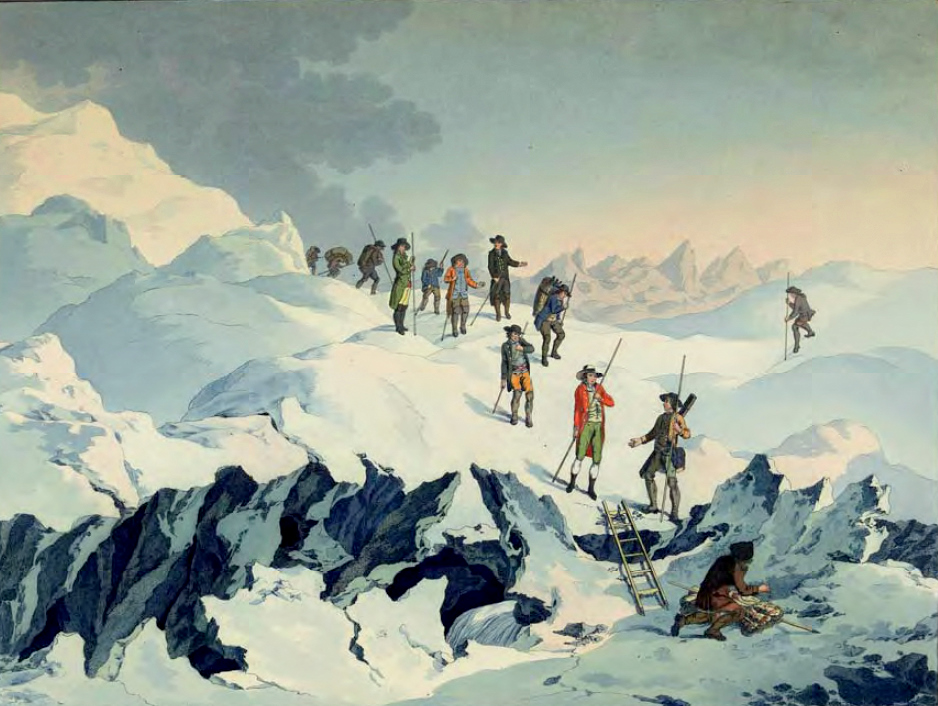
On August 8, 1786, local climbers Jacques Balmat and Doctor Michel Paccard reached the summit of Mont-Blanc for the first time in recorded history.
Horace-Bénédict de Saussure initiated this climb. The Swiss scientist from Geneva had offered a reward for the first person to climb Europe’s highest summit.

This climb traditionally marks the start of modern mountaineering. De Saussure followed the next year, as did the first Brit, Colonel Mark Beaufroy. As for Marie Paradis, she was the first woman to reach the summit in 1808.
Nowadays, the mountain is climbed by an average of 20,000 mountaineer-tourists each year.
👉 Climbing Mont Blanc is a challenging yet awe-inspiring experience but you need to make sure you are well prepared. With Millets voucher codes, you can get the gear you need to stay safe and explore the beauty of Mont Blanc for yourself.
How high is Mont Blanc?
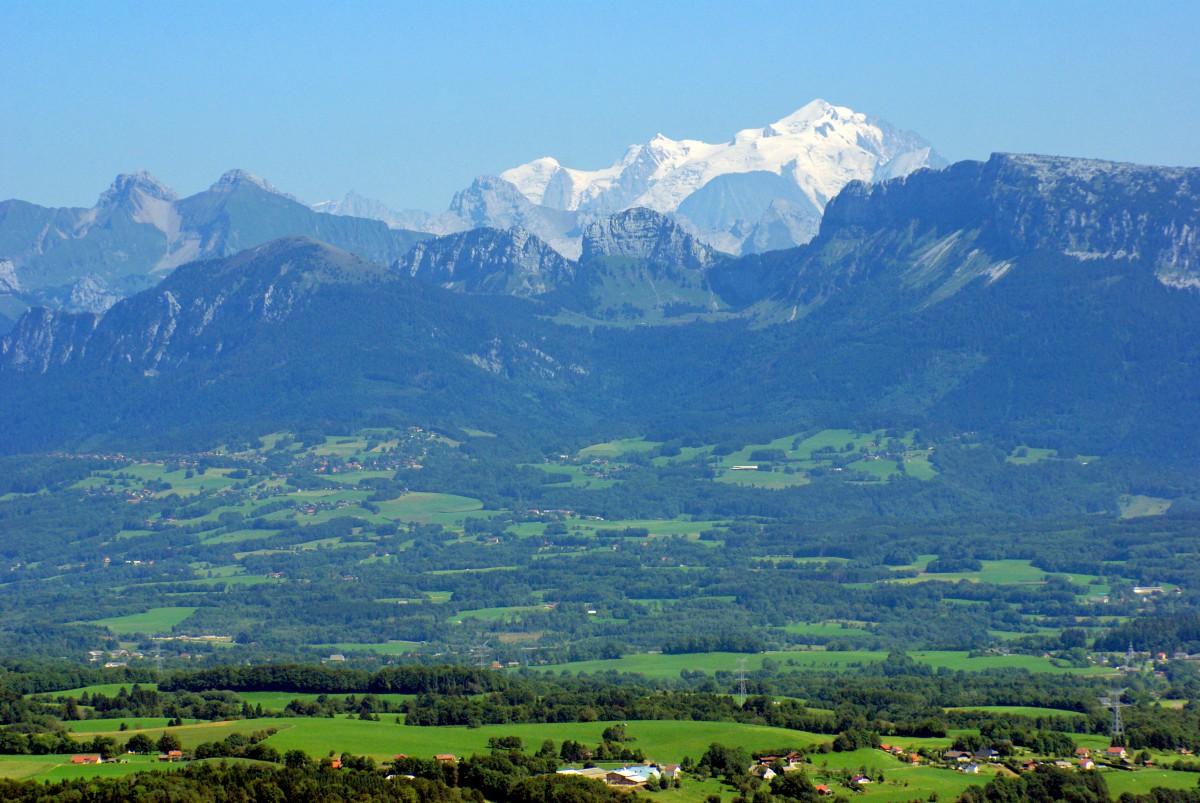
Until recently, French geography textbooks set the altitude of Mont-Blanc at 4,807 m.
Then, the IGN and expert surveyors, using GPS technology, changed the altitude to 4,810.40 m (15,782 ft).
Of course, this could be altered by the thickness of the perennial ice and snow that cover the summit’s dome. The actual rock summit is at 4,792 m.
And then, after the 2003 heatwave that touched Europe, a team of scientists downgraded the altitude to 4,808.45 m. Before gaining altitude again in 2009 at 4,810.45 m.
Extreme temperatures!
At the summit, the wind speed can reach 150 kph. Temperatures can drop to -40°C. They rarely rise above 0 °C (32 °F) even in summer.
From the altitude of 3,700 m, all precipitations fall in the form of snow. Contrary to general public knowledge, snowfalls are more significant in summer than winter, for the cold air does not contain much humidity.
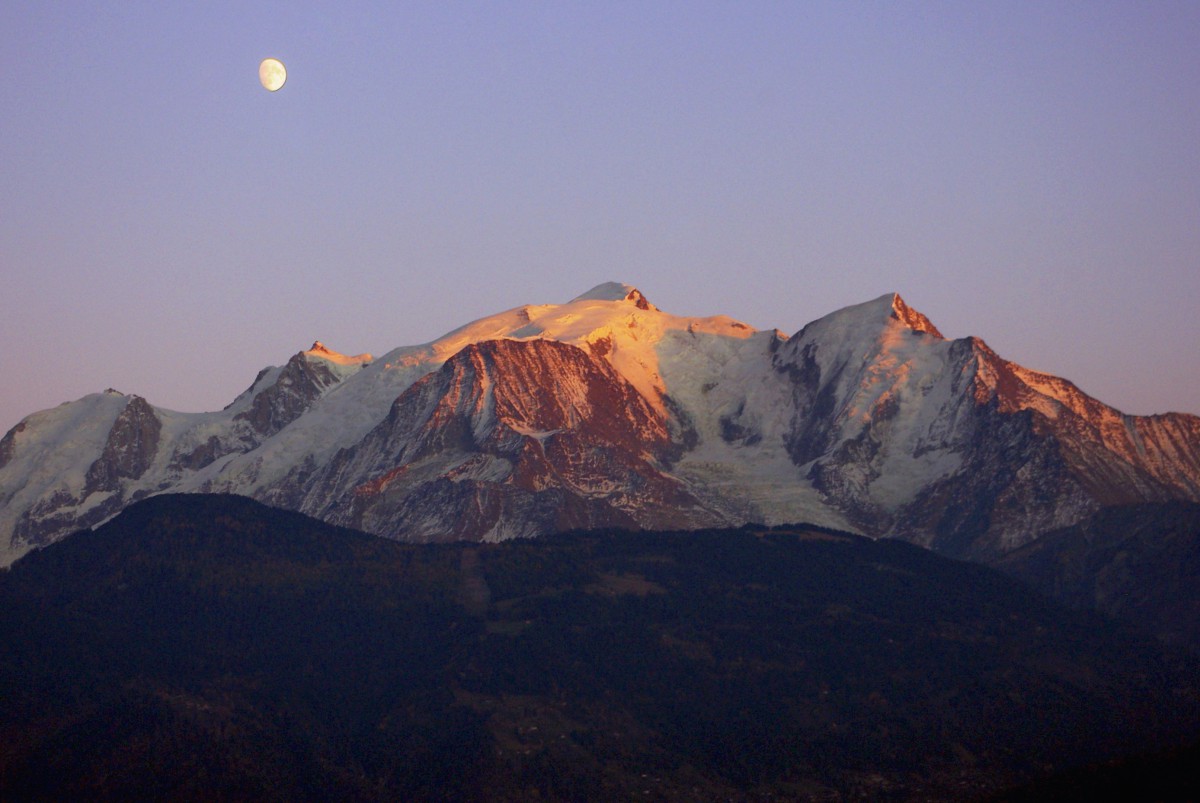
Fascinating views from the summit
From the summit, the view stretches to four mountain ranges:
- the Jura,
- the Vosges,
- the Black Forest (Germany) and
- the Massif Central.
However, even in sunny weather, it is not always possible to distinguish these mountains. This is due to pollution emanating from the plains and the absence of wind. Visibility can be reduced to 100 km as the crow flies.
Mont-Blanc can be viewed from several places in eastern France. From the Ballon d’Alsace in the Vosges to Dijon, Lyon, Grenoble, and Geneva, Switzerland.
Mont-Blanc: a protected area
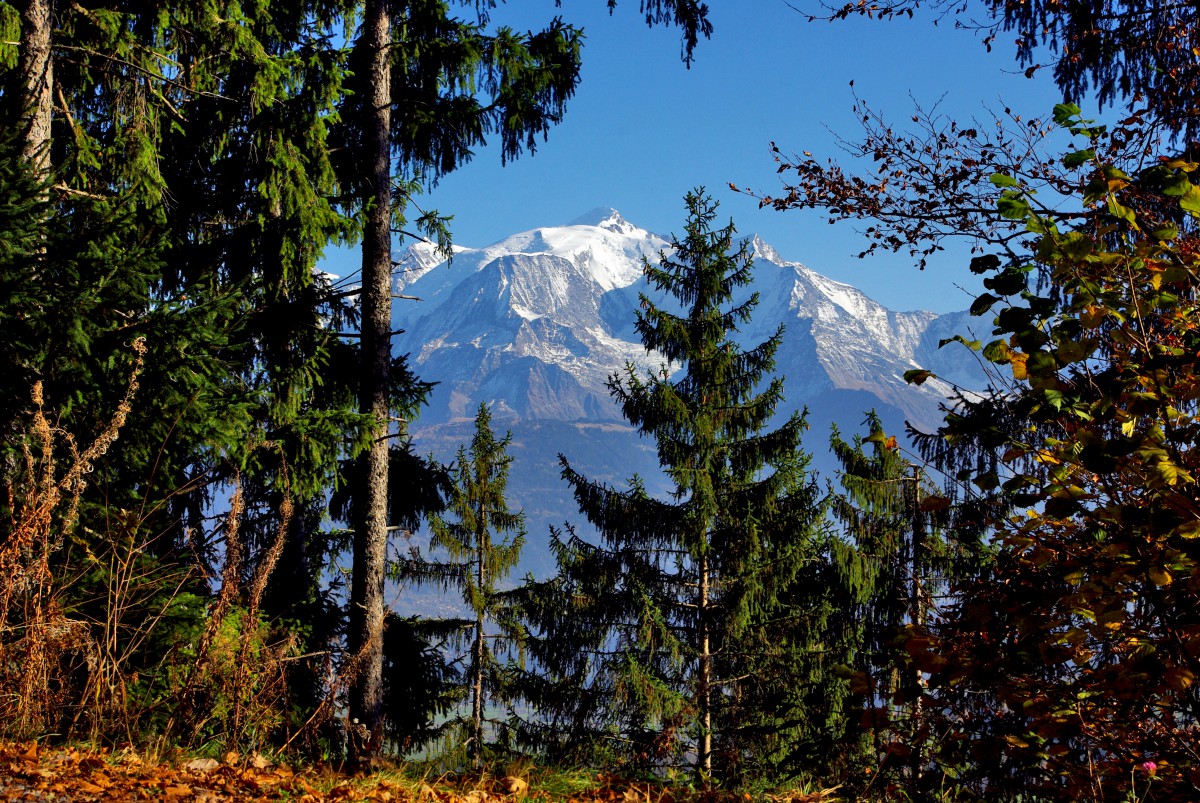
The massif is home to:
- 25 animal species (including chamois, ibex, marmots and alpine chough) and
- 45 plant species
Animals and plants must be respected and protected.
For many years, the massif has been a point of conflict between:
- those who want to exploit it for economic and touristic reasons, and
- those who wish to protect the site that they believe is threatened by many visitors.
An overcrowded mountain!
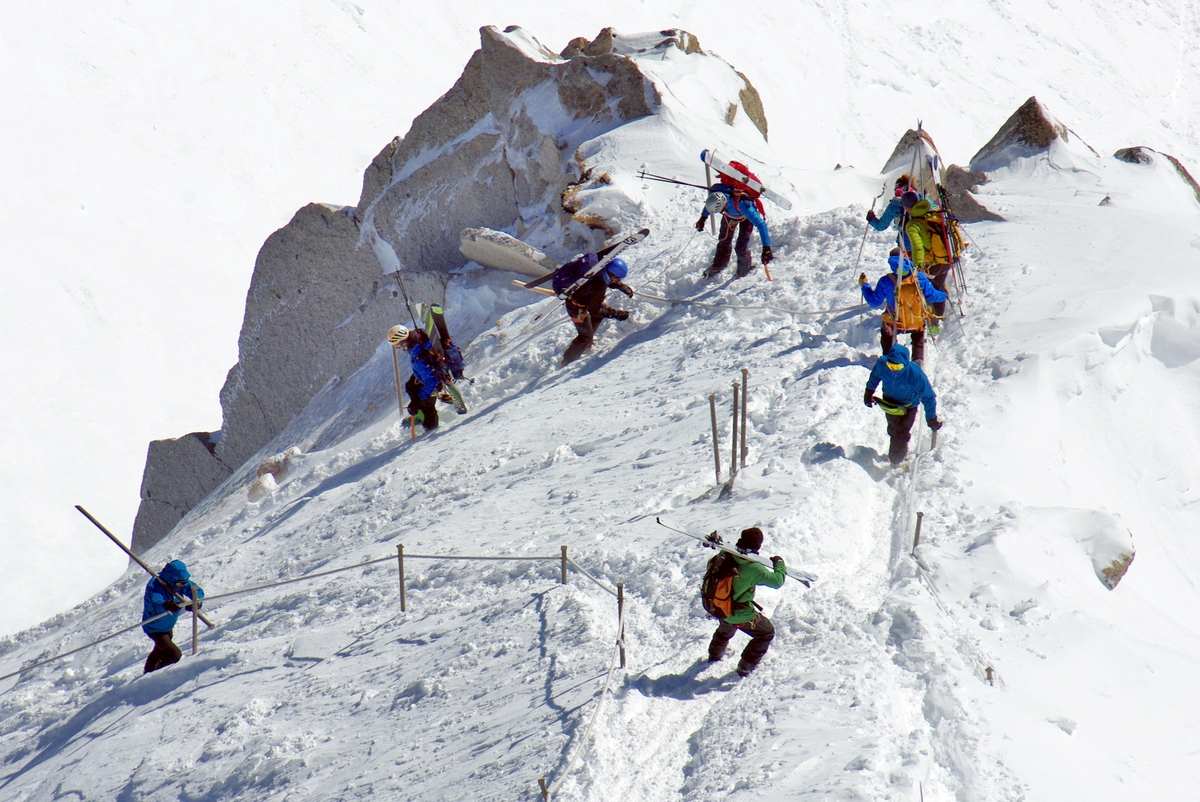
In summer, between 300 and 400 expeditions to the summit can be launched each day.
Those in favour of protecting the site estimate that in the future, more than 100,000 visitors could climb the summit, compared to 30,000 today.
In the summer of 2003, a French TV channel covered shocking news. Alpinists were blamed for tonnes of rubbish and faeces shamefully abandoned in the area of the Refuge du Goûter. Irrespective of local laws that forbid wilderness camping. The Mayor of Saint-Gervais-Mont Blanc told the journalists about an existing open-air dump.

In 2000, the French government proposed adding the massif to the UNESCO World Heritage list. The site is known for its uniqueness and cultural importance.
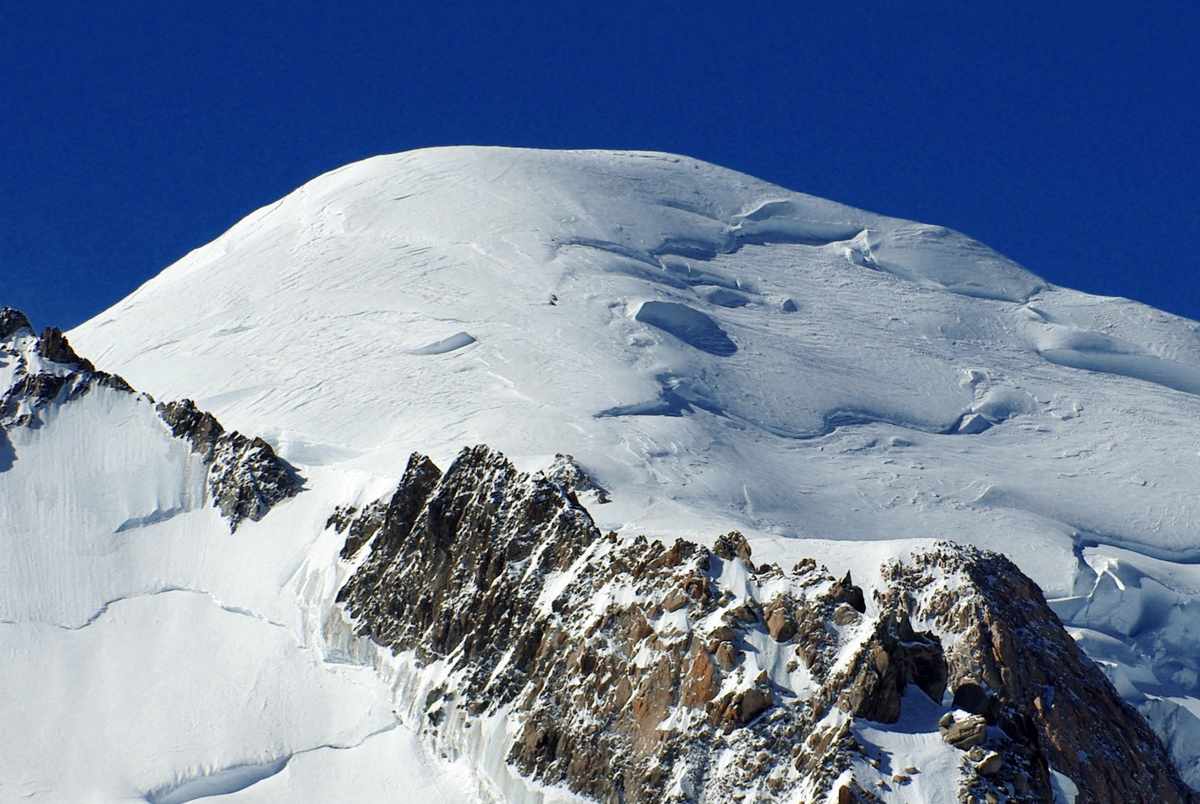
The Mont-Blanc massif is considered the birthplace and symbol of modern mountaineering. Such a plan would require the three governments of Italy, France and Switzerland to agree on the terms of a UNESCO listing.
What to see around Mont-Blanc
The Mont-Blanc massif is a tourist hotspot with many sites to explore. Here are a few suggestions (French-side only!):
The town of Chamonix
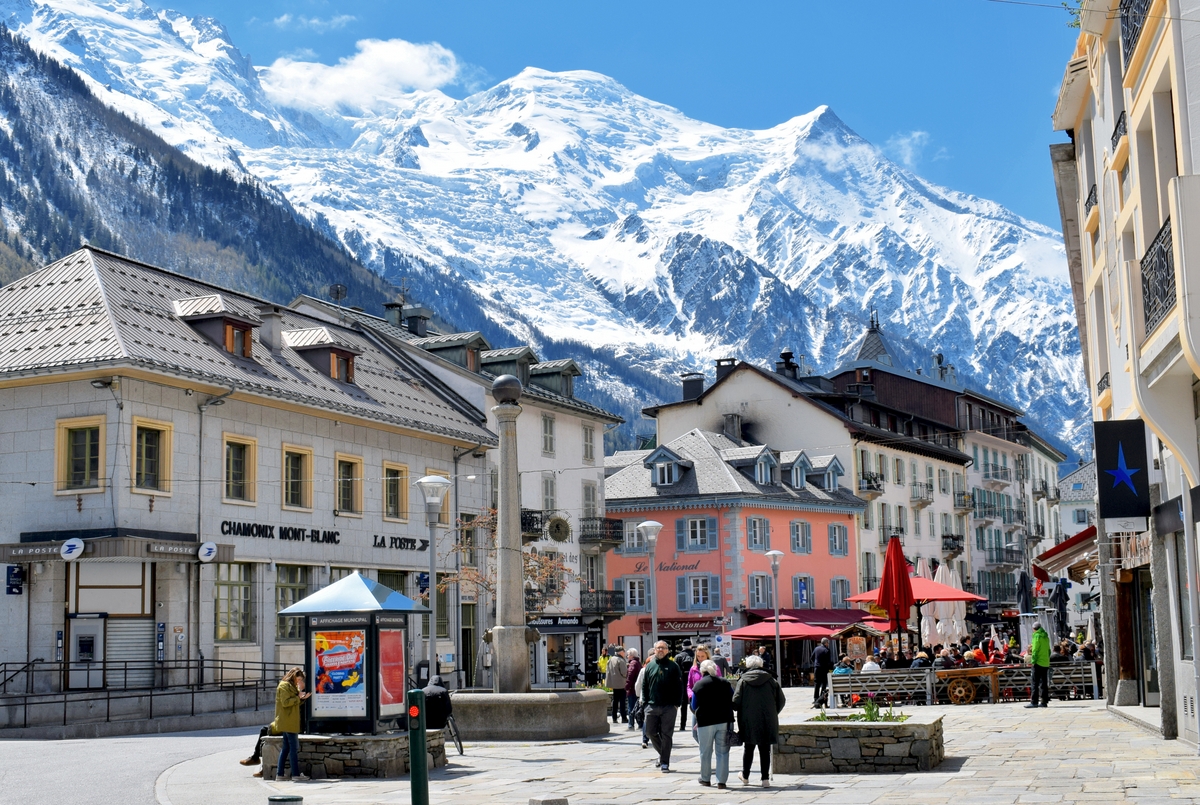
The resort town of Chamonix lies at the foot of Mont-Blanc. It offers various outdoor activities, from mountaineering, hiking and climbing to skiing and snowboarding. Find out more about Chamonix-Mont Blanc.
The Mont-Blanc Tunnel
The Mont-Blanc tunnel is one of France’s longest tunnels (11.6 km), linking Chamonix, France, to Courmayeur, Italy.
Mer de Glace via Montenvers Railway
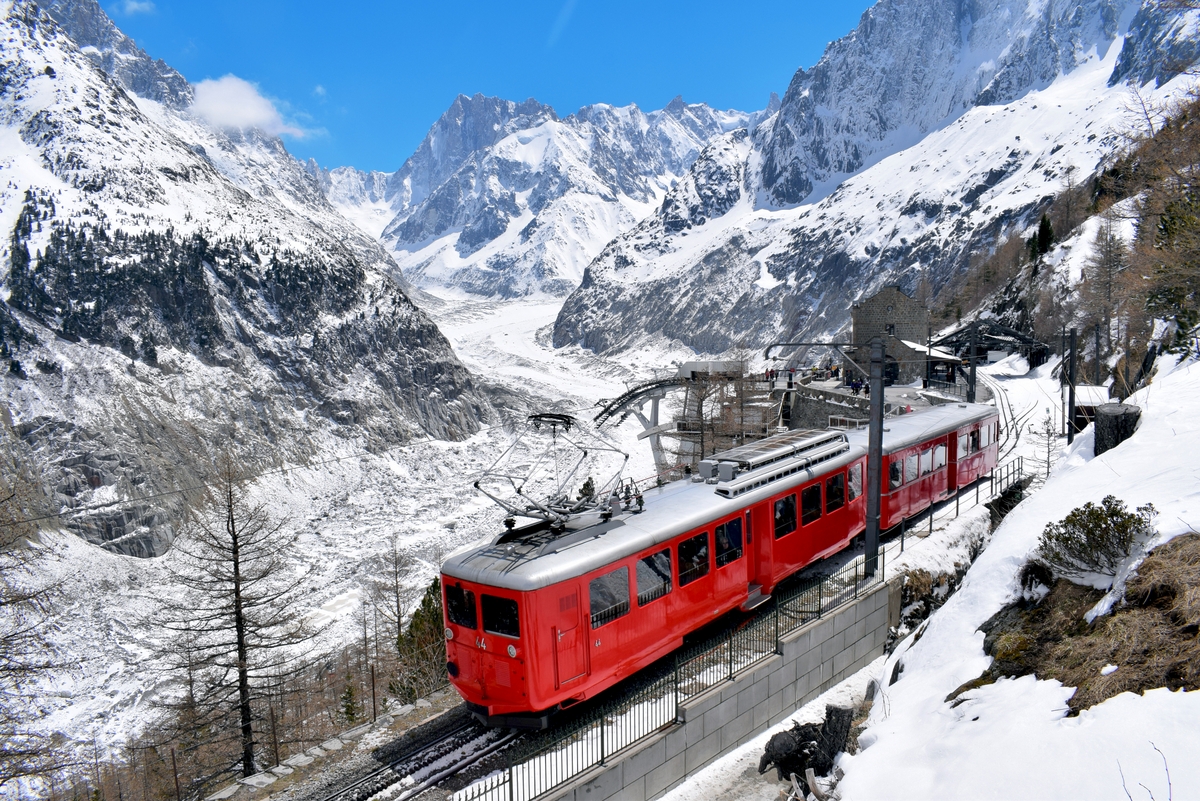
The Montenvers mountain railway (Chemin de fer du Montenvers) leaves Chamonix to reach the Montenvers Hotel (1.913 m). There, you can enjoy a stunning view of the Mer de Glace. More info on our Chamonix article.
The journey to Aiguille du Midi

Reaching the Aiguille du Midi (3,842 m) is one of the most exciting cable car rides in the Alps. It offers fantastic views of the Swiss, Italian and French Alps as far as the Matterhorn and Monta Rosa. More info on our Chamonix article.
Le Brévent
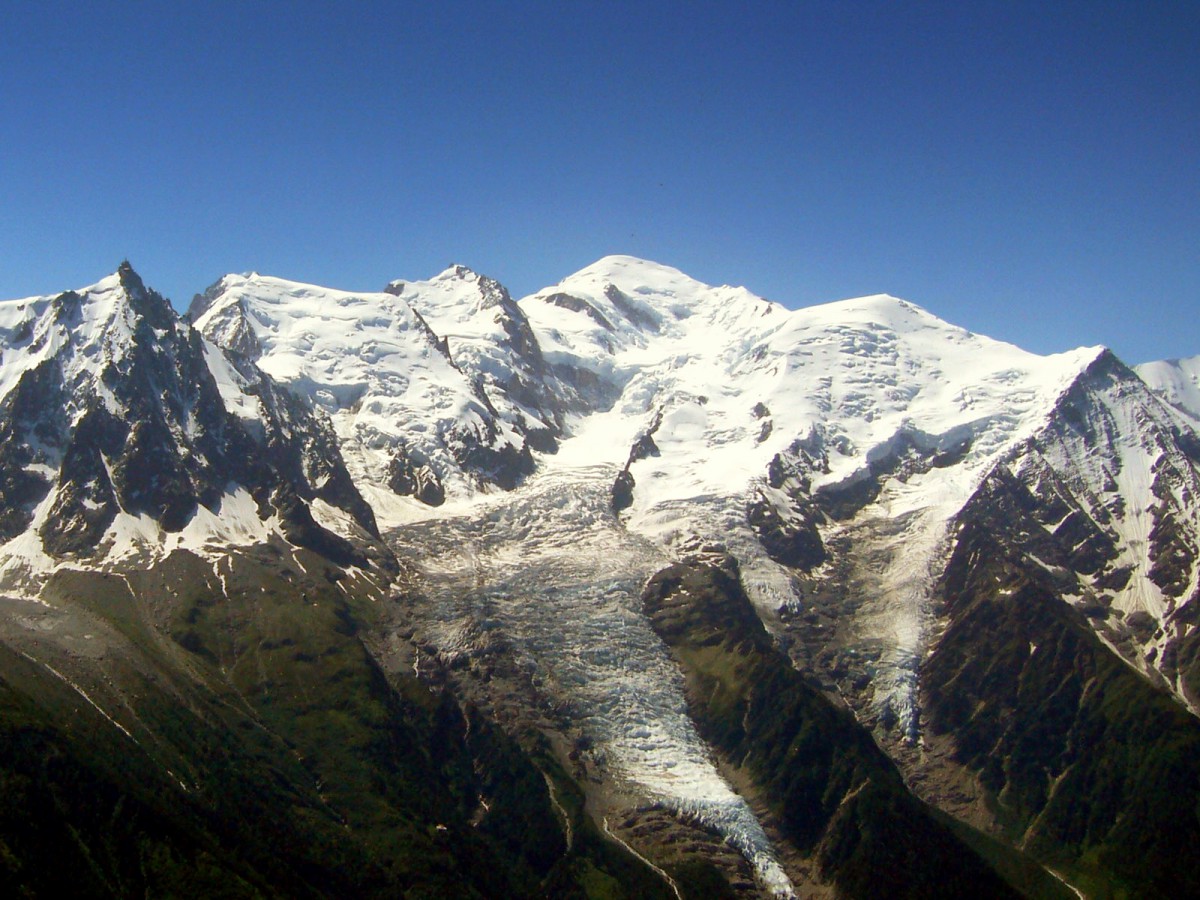
To admire one of the best views of the Mont Blanc massif, go to the top of Le Brévent. The mountain is accessible by gondola from the centre of Chamonix. More info on our Chamonix article.
The Mont-Blanc tramway, Saint-Gervais-les-Bains
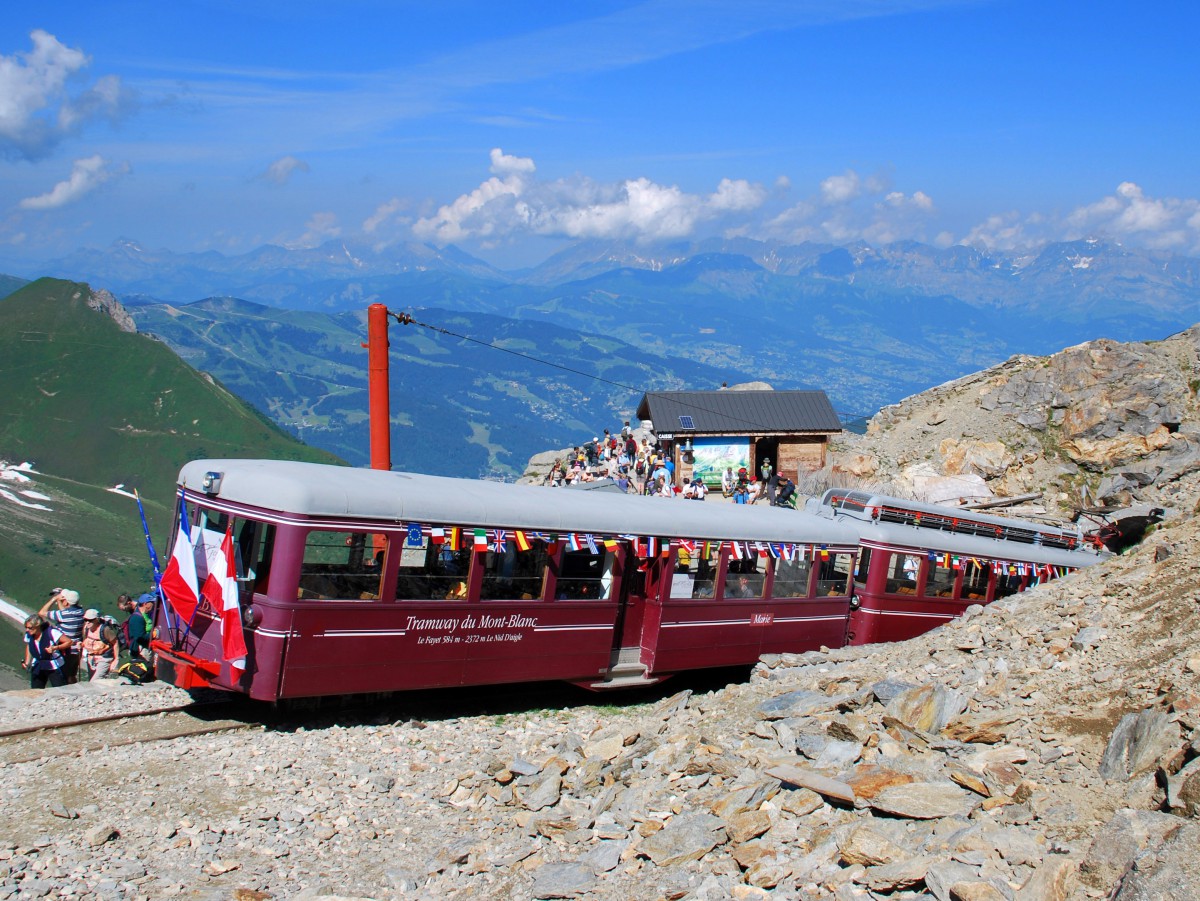
The Mont-Blanc tramway is a mountain railway line that departs from the railway station of Le Fayet in the town of Saint-Gervais-les-Bains.
This popular tourist attraction is 12.4 km long and was completed in 1914. Initially worked by steam locomotives, the line was electrified in 1956. The three coaches were named Anne, Marie, and Jeanne, after the three daughters of the line’s owner at the time of electrification. It is now operated by the Compagnie du Mont Blanc, which also manages the Montenvers train and the Aiguille du Midi cable car.
The line provides spectacular views of the Mont-Blanc glaciers. It comprises a few sections from Le Fayet to the tramway’s terminus, the Nid d’Aigle (Eagle Nest).
The first section of the line, from Le Fayet to the Col de Voza (1,653 m), was opened in 1907.
The Nid d’Aigle, at the tramway’s terminus, reaches 2,386m and offers a fantastic viewpoint over the Bionnassay glacier, towered by the Aiguilles de Bionnassay (4,051m). From there, experienced and well-equipped alpinists can progress to the refuges of Tête Rousse and Goûter to start the ascension of Mont-Blanc.
The Tour du Mont-Blanc trail
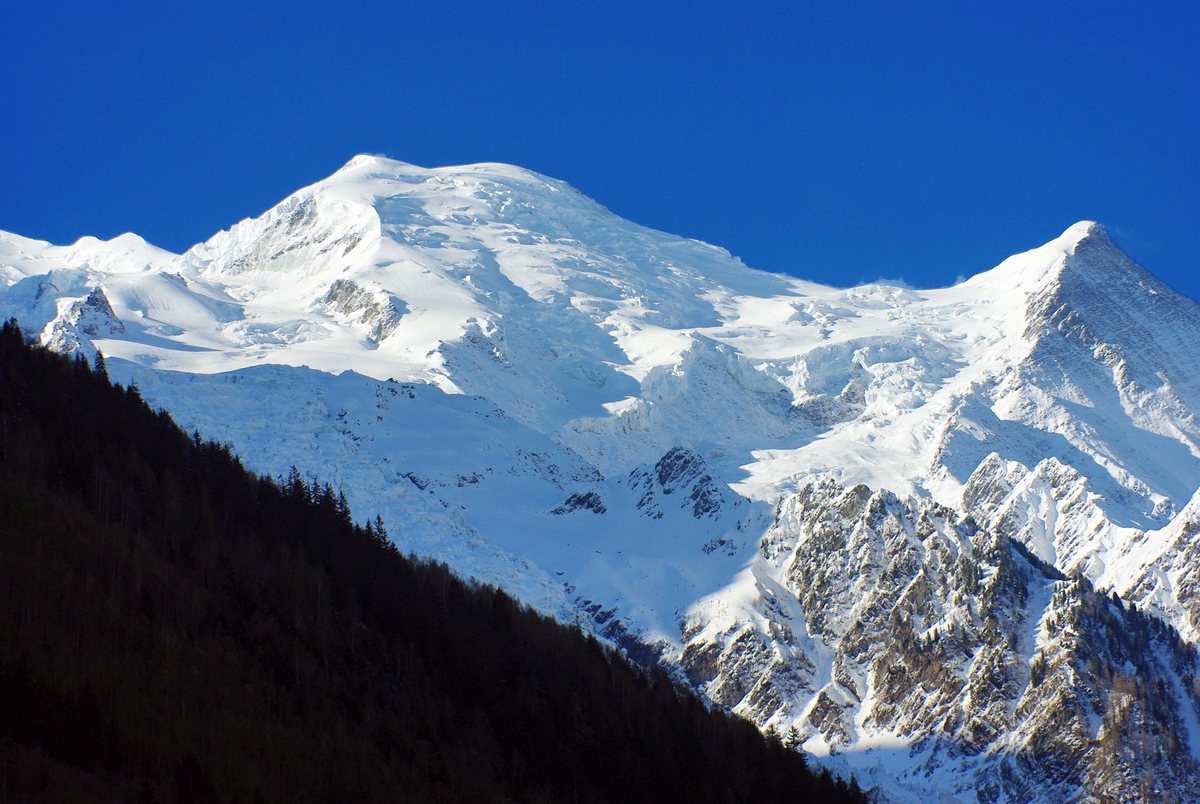
The 170 km Tour du Mont-Blanc (TMB) is a walking trail that circles the Mont Blanc massif through Chamonix (France), Martigny (Switzerland) and Courmayeur (Italy). It usually takes 7-10 days to cover the entire distance of this circular route. The route passes through seven valleys around Mont Blanc:
- the Chamonix (or Arve) valley, the Montjoie, and Vallée des Glaciers, in France,
- Val Veni and Val Ferret in Italy,
- Swiss Val Ferret, and either the Arpette or Trient Valley in Switzerland.
Accommodation is available along the Tour du Mont Blanc route. The itinerary can be broken into segments to suit virtually any fit person.
The trail’s highest points are the Col des Fours in France and the Fenêtre d’Arpette in Switzerland, both at an altitude of 2,665 m. Some parts of the trail can be covered in snow during summer. Hikers should always carry crampons and heavy-duty waterproof jackets.
The trail passes through (or near) the towns of Martigny, Courmayeur and Chamonix.
The villages of Cordon and Combloux
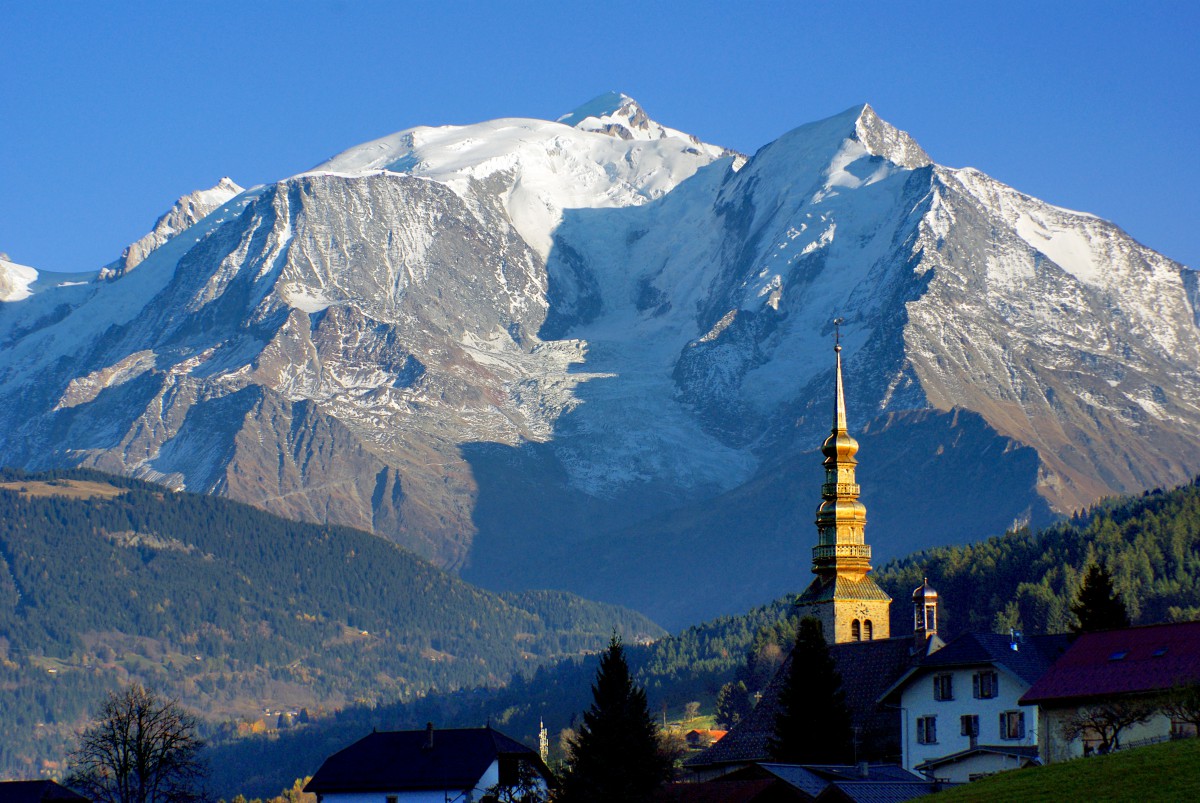
Situated between Sallanches and Megève, the villages of Cordon and Combloux command spectacular views of the Mont-Blanc massif. We love the scenic villages for their churches’ onion-shaped spires. And also for the well-maintained chalets that make Cordon and Combloux not-to-be-missed sites in the region.
How to get to the Mont-Blanc region

BY CAR. The region of Chamonix is easily accessible by car.
- From Paris, take the A6 to Mâcon and the A40 to Chamonix.
- From Marseille and Provence, take the A7 to Valence before connecting to the A49 to Grenoble and then the A41 through Chambéry and Annecy till it reaches the A40 motorway.
BY TRAIN. Chamonix is also easily accessible by train, with regular TGV service from Paris Gare de Lyon to Geneva or Annecy. Take a TER (regional express train) to Saint-Gervais-les-Bains before connecting to Chamonix with the Mont-Blanc express service. Some TGVs can also lead you directly to Saint-Gervais-les-Bains, located 20 km from Chamonix.
BY AIR. If you travel from Australia or America (or overseas!), take a flight to the Swiss airport of Geneva Cointrin (88 km) or Lyon Saint-Exupéry (220 km) and rent a car from there. Geneva, Switzerland, is the closest airport to the Savoie region.
Useful websites to plan your stay in the region

- The Official website of the Chamonix Tourist Board
- The Tourist Info Board of Saint-Gervais-les-Bains
- The Tourist Info Board of Sallanches
- The website of Mont-Blanc Natural Resort: Practical info about ski lifts and mountain railways open all year round
We have published a few articles on the region:
- the French Alps
- Chamonix-Mont-Blanc
- Photos of Mont-Blanc seen from afar
- The historic province of Savoie
- The French département of Haute-Savoie
- The city of Annecy
- My visit to the Aiguille du Midi on my French blog
- My visit to the Mer de Glace on board the Montenvers train on my French blog
PIN IT for later!
Liked what you read? Pin it on Pinterest
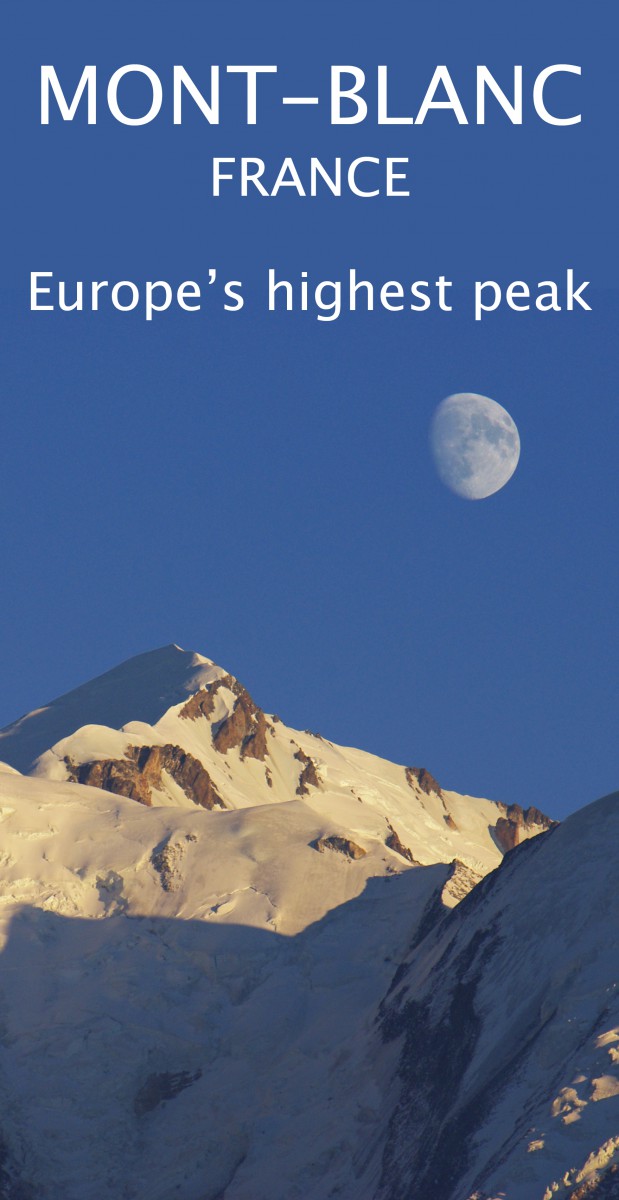
I’d like to thank the Compagnie du Mont-Blanc for making this discovery of Chamonix, Aiguille du Midi and Mer de Glace such an amazing and unforgettable moment!

